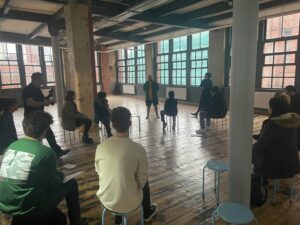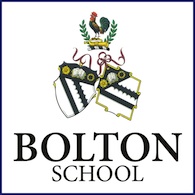For most independent schools, working with their local community through partnership activity is integral to their purpose. More often than not, the school is the oldest part of the local educational landscape withdeep roots in local structures and a desire for the local area to thrive. Engagement is emphatically not because they are trying to do so in an attempt to justify charitable status; it is because it is the right thing to do.
So, what about the why of partnership activity?
For school managers one obvious why is that mostly, with the odd historical exception, none of us can move our schools geographically. Whilst we all strive for strong bursary programmes, we still need our local areas to thrive economically so that there is a core market of fee payers. Our schools are part of the local eco-system that is attractive to aspiring families moving to an area or a business choosing to locate. This means one aspect of partnership is at that high level, amongst the local authority and development agencies looking to promote a local area. Do estate agents list your school as part of their message about why an area is attractive? If not, why not?
In order to leverage this type of partnership with local politicians and businesses, it is important to know your impact as a business in your local area. The Independent Schools Council (ISC) has worked with Oxford Economics to create an impact calculator that helps you do that; it is available on their website to members. In the last financial year, Bolton School contributed £23.4 million towards the town’s gross domestic product (GDP). Bolton is one of the country’s largest towns and the contribution represents 0.43 per cent of its entire GDP. We paid £15.9 million in tax into the Exchequer’s coffers, which included income tax, NICs, plus indirect and induced tax contributions. Payments to other businesses for goods and services relating to our core operations amounted to almost £11 million. The total number of jobs supported by our activities is 747.
These partnerships may be far more familiar to school managers than many of the educational partnerships that are also so important. They help frame our schools as having a positive impact on the local area, through supporting jobs, commerce, supply chains and attracting talented and ambitious families who will drive progress. Too often we are seen as separate and even aloof – this very practical form of partnerships establishes real connections that can be understood by all outside the world of education. It creates allies far beyond the narrow focus of privilege that can all too often characterise debate about our schools.
All that said, by far the most important reason to encourage partnership is to make a difference to the young people in our local areas. There is a real Keynesian social capital multiplier effect around our schools and that must be harnessed for the good of society. Obviously, those who attend our schools are given a great education and develop character that focuses them on making a difference to the world they will live in and help shape. Even more evidently, there is an opportunity to foster social mobility with our bursary programmes. But, however large a bursary programme our schools have, it cannot touch all local children by direct attendance as pupils. This is where partnership can be powerful. Our schools represent an enormous pool of talented teachers and pupils who can collaborate and partner with other schools in the local area.
In forming such partnerships, it is important to start in the right place: which is to be focused on two-way partnership, not doing good to people but doing good with them, to be meeting a real need rather than offering what you want to offer; also being sure you do actually have expertise or facilities or time or resource to offer and to focus on intended outcomes and how they will be evaluated. If your school currently has a range of partnerships this is as good a time as any to make sure they meet these tests for the future. There is much helpful support and advice out there – for example the Schools Partnership Alliance provides case studies, collaboration and advice: https://schoolpartnershipsalliance.org.uk/
Here at Bolton, we are a member of the Bolton Learning Partnership (BLP) with 17 other state secondary schools. We integrate with the local primary schools using their cluster structure, so we work through systems that already exist rather than imagine we must invent them. The BLP has the strapline of ‘Bolton’s 19k’, recognising that across the landscape of education locally 19,000 secondary school pupils are being educated and we have a collective responsibility to raise the aspirations of all. That is certainly by facilitating events, but also deeper and more purposeful collaboration between professionals in teaching and learning.
Our Director of Creative Learning, Naomi Lord, has set up and runs Creatives Now, an arts enterprise supported by the Local Cultural Education Partnership and local authority. It is an arts collective for 12-18-year-olds, open to young people from across the town and is driven by a core group of up to 20 youngsters attending weekly activities. Established in 2021, the collective focuses on co-design, welcoming those interested in collaboratively shaping Bolton’s cultural scene. With a town centre studio, they deliver diverse projects igniting creativity – from local and regional exhibition trips to hands-on sessions with international artists to conversations with cultural leaders. Online offerings further enhance their reach.
More nationally we can engage with the big-ticket items impacting education. Many schools are engaged in teacher recruitment through participation in school-centred initial teacher training. This is us doing our bit for an immediate national need. Our colleagues are governors in local schools, they examine for the boards, they support teacher subject organisations – all of these are independent schools partnering to address national issues.
Partnerships are not just about sharing facilities, but never let anyone disparage the impact for those that do. For local schools without a pool or playing field, sharing those is far more than a gesture – it transforms opportunity.
For managers it is important not to see partnership as a ‘nice to have extra’ where you can follow enthusiasms and interests of pupils and colleagues. That personal engagement and commitment can be vital, but everything a school does has a cost: in cash, in opportunity, in time. For that reason, your partnership needs a development plan like every other part of the organisation, it needs a set of long-term objectives, medium term plan and detail for the coming year. This will allow you to add new activity and, equally importantly, remove projects where the impetus and need has moved on.
In the current political climate, our schools must be seen to be part of the solution for society, not as part of the problem. In the local landscape of education, we must be seen to have a purposeful role rather than be separate from it. Very often our schools will be about aspiration. We can also often bring academic expertise, especially in some subjects where teacher recruitment in the state sector is challenging. I will conclude by offering my…..
Top five tips:
Think of partnership as taking your place in your local community
Solve problems that people have, not ones you imagine
Look for two-way collaboration
Know your expected outcomes and how to measure impact
Have a coherent and strategic plan.


Leave a Reply